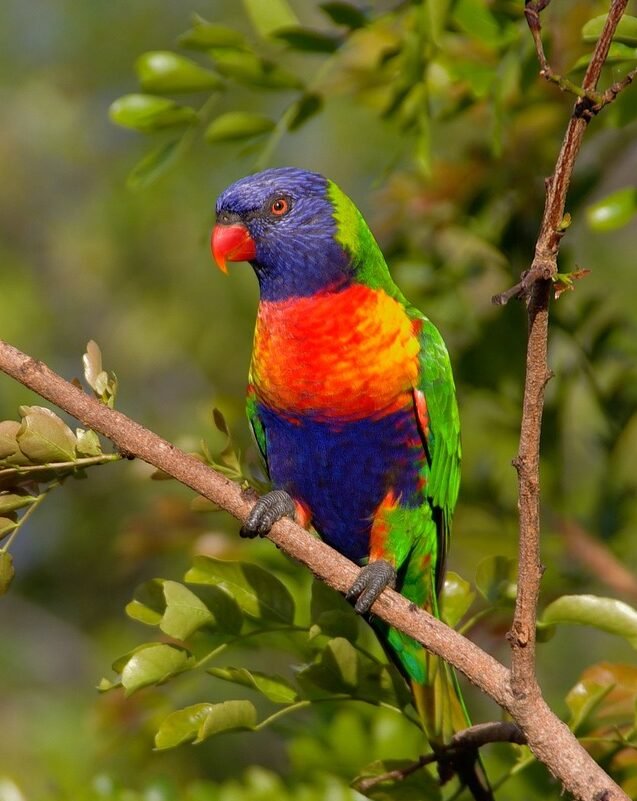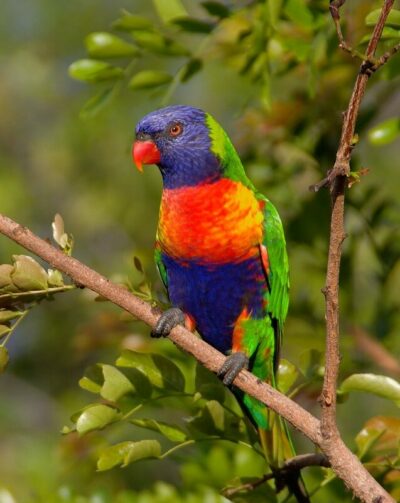Rainbow Lorikeets are one of the most colourful birds in all of Australia, also earning a place in both Australia’s and Britain’s history when, in 1771, it became the first of Australia’s 57 species of parrots to take flight on British shores. Rainbow Lorikeets are quite noisy, as most Australians would agree when woken up in the early morning by these chattering birds. They are extremely sociable birds, feeding in groups of up to 20 individuals.
Appearance
The Rainbow Lorikeet is a breathtaking bird. Want to know why? Look at their name, it says it all. Rainbow Lorikeets are literally rainbow, with both males and females, which are nearly identical, having a blue head and neck, a vivid yellow and orange-red chest, a blue lower body, emerald-green wings, a red bill and red eyes.

Location
Rainbow Lorikeets are widespread along all of eastern Australia. They can be found as north as Queensland’s Cape York, extending all the way south to Tasmania. They thrive in coastal areas as far west as the Yorke Peninsula in South Australia. A small population of them, descendants of captives released into the wild in the 1960s, live near Perth in Western Australia, where these unwelcome birds are seen as pests.
Noisy Nature
It is impossible to ignore these noisy creatures. These gregarious birds are often heard arguing in groups of two or three over ownership of feeding areas, but when a whole flock of them flutter among the foliage of trees to sip on nectar it’s like standing in the middle of a humongous chattering crowd.
Diet
Rainbow Lorikeets feed on pollen and nectar from flowers. They prefer native trees and shrubs such as eucalyptus, grevilleas and banksias, but may also eat from introduced plant species. When flowers are scarce, these birds will eat seeds and small insects, but their preference for sweets leads them to soft fruit like mangoes or grapes.
Habitat
Rainbow Lorikeets are commonly seen in urban parks and in the middle of cities and towns where flowering trees are plentiful. However, these birds are also frequently spotted in home gardens.
Housing
Rainbow Lorikeets, like the majority of Australian parrots, need hollows in old trees for nesting sites. Holes such as these can take about 100 years to form. This is a problem for the Rainbow Lorikeet as humans are continuously cutting down the old trees which have these hollows to make space for houses and other buildings or roads. Even if we plant other trees someplace else to make up for the trees we cut down, a hollow will take another 100 years to form.
Conservation Status
Currently, Rainbow Lorikeets are listed as the Least Concern by IUCN, although their number today is decreasing. This is due to habitat loss and capture for the international parrot trade so that they can be used as pets. As mentioned above, the hollows that Rainbow Lorikeets need for nesting are disappearing due to the clearing of trees. This is a problem for these parrots, as without the hollows, they will have no place to breed.

